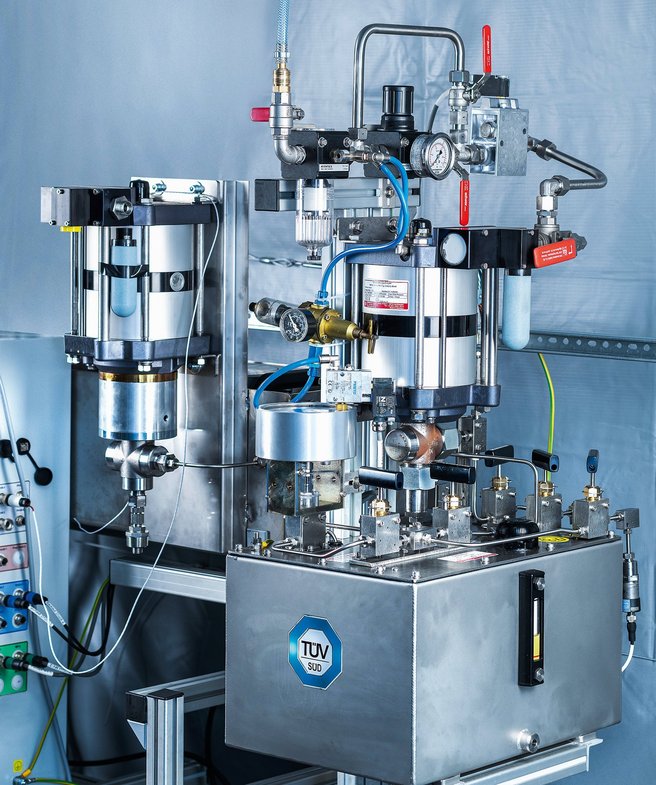INSIDE VIEW:

Working on a truly innovative topic is a dream for every engineer. In our laboratory, near Munich, we’re testing whether materials and components are suitable for use with hydrogen—chemically speaking, H2. In this way my team and I are actively working on advancing the energy transition.
Hydrogen as an energy source has been a big topic in many fields for years now—not just since the current energy crisis. Especially in the area of mobility, there will be a lot of useful areas of application in the coming years. That’s because whenever very long distances must be covered or very high performance and availability are required, hydrogen will soon replace diesel fuel and the rest. Trucks, buses, construction equipment and garbage trucks powered with hydrogen, even hydrogen-powered locomotives, will soon play a role in our mobility. Industrial companies are also desperately seeking alternatives to fossil energy sources such as natural gas and oil.
What many people don’t know is that hydrogen has very specific properties. Every material and every component that comes into contact with it—from a vent to a complete pipeline—must therefore be specially adapted. For instance, hydrogen can cause certain materials to become brittle, which means that a pipe could break after a certain amount of time. Gaskets and seals can also develop problems with hydrogen. That’s why existing pipelines, such as those through which natural gas is transported, cannot easily be converted for use with H2.

“I’m certain that the future belongs to hydrogen.”
Right now, there’s a very intensive search for new hydrogen-compatible materials, also in order to replace current expensive solutions. Stainless steel, for example, is well suited as a material. However, there are always supply issues with certain alloy elements, so alternatives are needed.
For many smaller and medium-sized manufacturers that are currently developing solutions, we’re their first point of contact. We test their innovations to find out whether they’re suitable for the respective area of application. First we look to see if there is already a standard that we can apply for that particular situation. This is very often the case, especially in the automotive sector.
Otherwise, each component test is a one-off case. We really have to take a close look at the specific application the part is intended for. How high will the pressure be, what temperatures will it be exposed to, how long will it be in use? Then, to simulate embrittlement and aging effects in the lab, we are using our methods to subject the materials and components to wear and tear that would normally take years.
I’m certain that the future belongs to hydrogen. The only factor inhibiting its breakthrough is its availability—but that will be changing massively in the coming years.